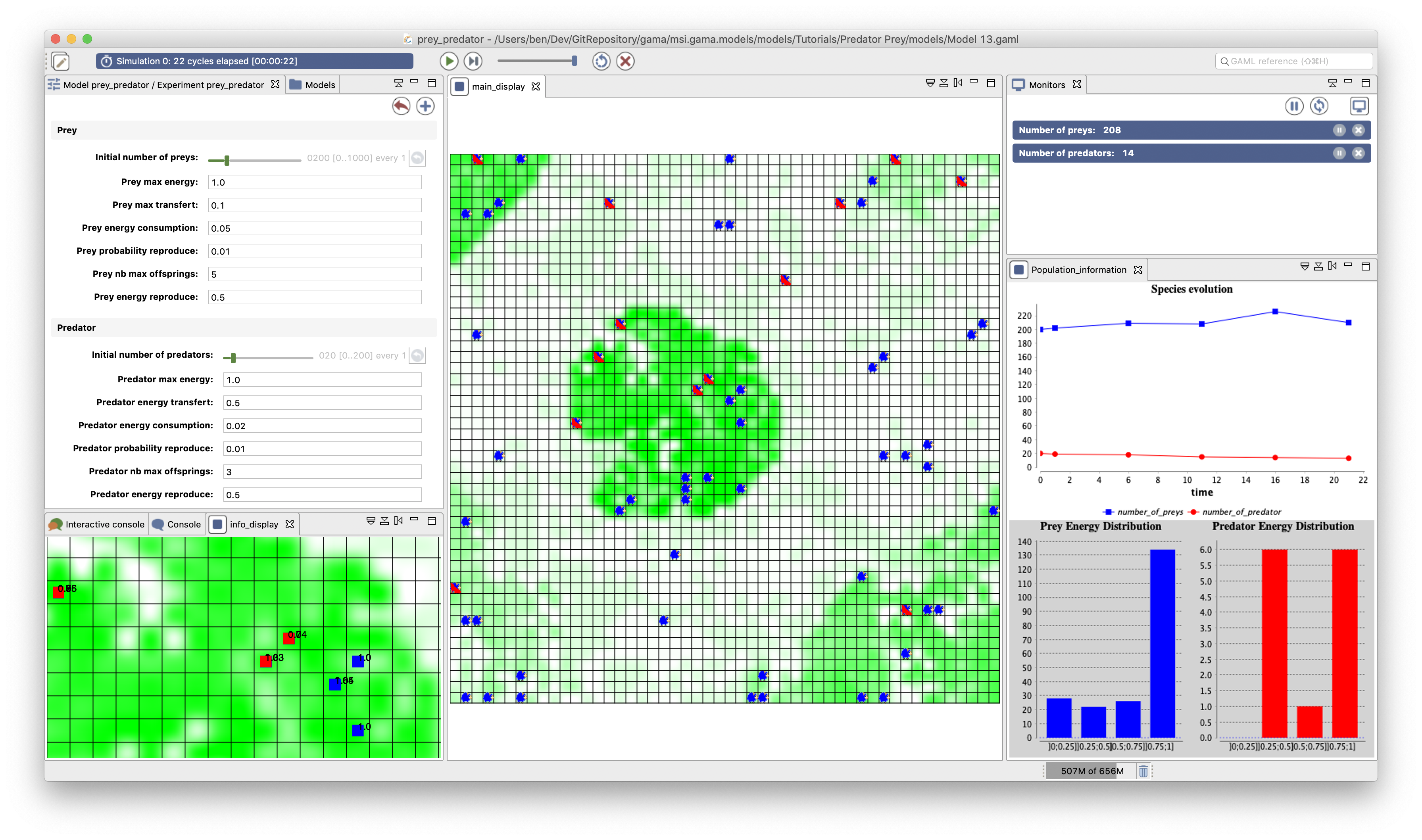-
Notifications
You must be signed in to change notification settings - Fork 99
PredatorPrey
This tutorial presents the structure of a GAMA model as well as the use of a grid topology. In particular, this tutorial shows how to define a basic model, to define "grid agents" which are able to move within the constraints. It also introduces the displays and agents' aspect.
All the files related to this tutorial (images and models) are available in the Models Library (project Tutorials/Predator Prey).
In this model, three types of entities are considered: preys, predators and vegetation cells. Preys eat grass on the vegetation cells and predators eat preys. At each simulation step, grass grows on the vegetation cells. Concerning the predators and preys, at each simulation step, they move (to a neighbor cell), eat, die if they do not have enough energy, and eventually reproduce.

This tutorial is composed of 13 steps corresponding to 13 models which are incremental representation of the same model, starting with the simplest model 1 and finishing with the latest one, model 13. For each step, we will present its purpose, an explicit formulation and the corresponding GAML code of the model.
- Basic model (prey agents)
- Dynamic of the vegetation (grid)
- Behavior of the prey agent
- Use of Inspectors/monitors
- Predator agents (parent species)
- Breeding of prey and predator agents
- Agent display (aspect)
- Complex behaviors for the preys and predators
- Adding of a stopping condition
- Definition of charts
- Writing files
- Image loading (raster data)
- Exploration of the model
- Installation and Launching
- Workspace, Projects and Models
- Editing Models
- Running Experiments
- Running Headless
- Preferences
- Troubleshooting
- Introduction
- Manipulate basic Species
- Global Species
- Defining Advanced Species
- Defining GUI Experiment
- Exploring Models
- Optimizing Model Section
- Multi-Paradigm Modeling
- Manipulate OSM Data
- Diffusion
- Using Database
- Using FIPA ACL
- Using BDI with BEN
- Using Driving Skill
- Manipulate dates
- Manipulate lights
- Using comodel
- Save and restore Simulations
- Using network
- Headless mode
- Using Headless
- Writing Unit Tests
- Ensure model's reproducibility
- Going further with extensions
- Built-in Species
- Built-in Skills
- Built-in Architecture
- Statements
- Data Type
- File Type
- Expressions
- Exhaustive list of GAMA Keywords
- Installing the GIT version
- Developing Extensions
- Introduction to GAMA Java API
- Using GAMA flags
- Creating a release of GAMA
- Documentation generation